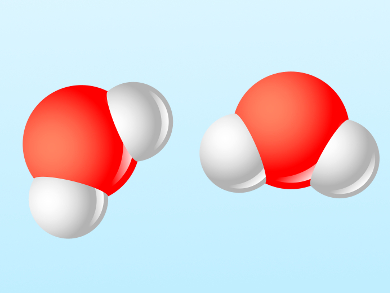The greatest mystery of water is its own dissociation. This spontaneous decomposition of water molecules into ions makes water such a good solvent. But the way in which this decay proceeds in detail and under what conditions, has still been known only in broad outlines.
The binding forces within water molecules are so strong that spontaneous decay is extremely unlikely. However, even pure water has a low conductivity. For every ten billion water molecules, there are only 36 ions. The ions also tend to reconnect directly. This dynamic makes it difficult to physically detect the ionic product of liquid water. Also, simulating the disintegration of water molecules with classical simulations is impossible. The self-dissociation is so rare that many billions of particles would have to be simulated in the computer. This exceeds the capabilities of today’s hardware.
Frank Weinhold, University of Wisconsin-Madison, USA, and colleagues have performed a first-principles calculation and mechanistic characterization of the ion product of liquid water (KW), based on Quantum Cluster Equilibrium (QCE) theory with a variety of ab initio and density functional theory (DFT) methods. They reduced the complexity of the model by using the fact that water molecules are polar and arranged in clusters in solution. Some of these clusters offer an environment in which ions feel particularly “comfortable”. In their model, the scientists have calculated which types of clusters are present in liquid water.
From the composition of the clusters, the team concluded the probability with which the water molecules dissociate. Their method also made it possible to understand the kinetics and reaction paths through which the water molecules in the clusters decay. The model shows, for example, which proton rearrangements occur in the different cluster structures and which energies and energy barriers are important.
As a result, the temperature dependence of the decay was understood. Between the melting point and the boiling point of water, the self-dissociation increases by a factor of about 1,000. This increase is predicted by the computer simulation and coincides with observations in nature.
- Predicting the Ionic Product of Water,
Eva Perlt, Michael von Domaros, Barbara Kirchner, Ralf Ludwig, Frank Weinhold,
Sci. Rep. 2017.
https://doi.org/10.1038 / s41598-017-10156-w




